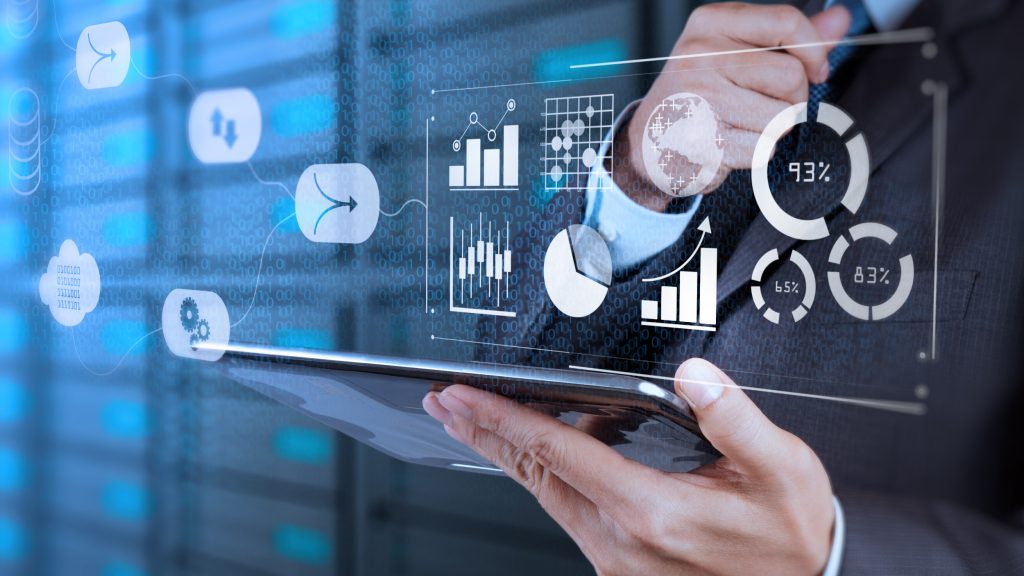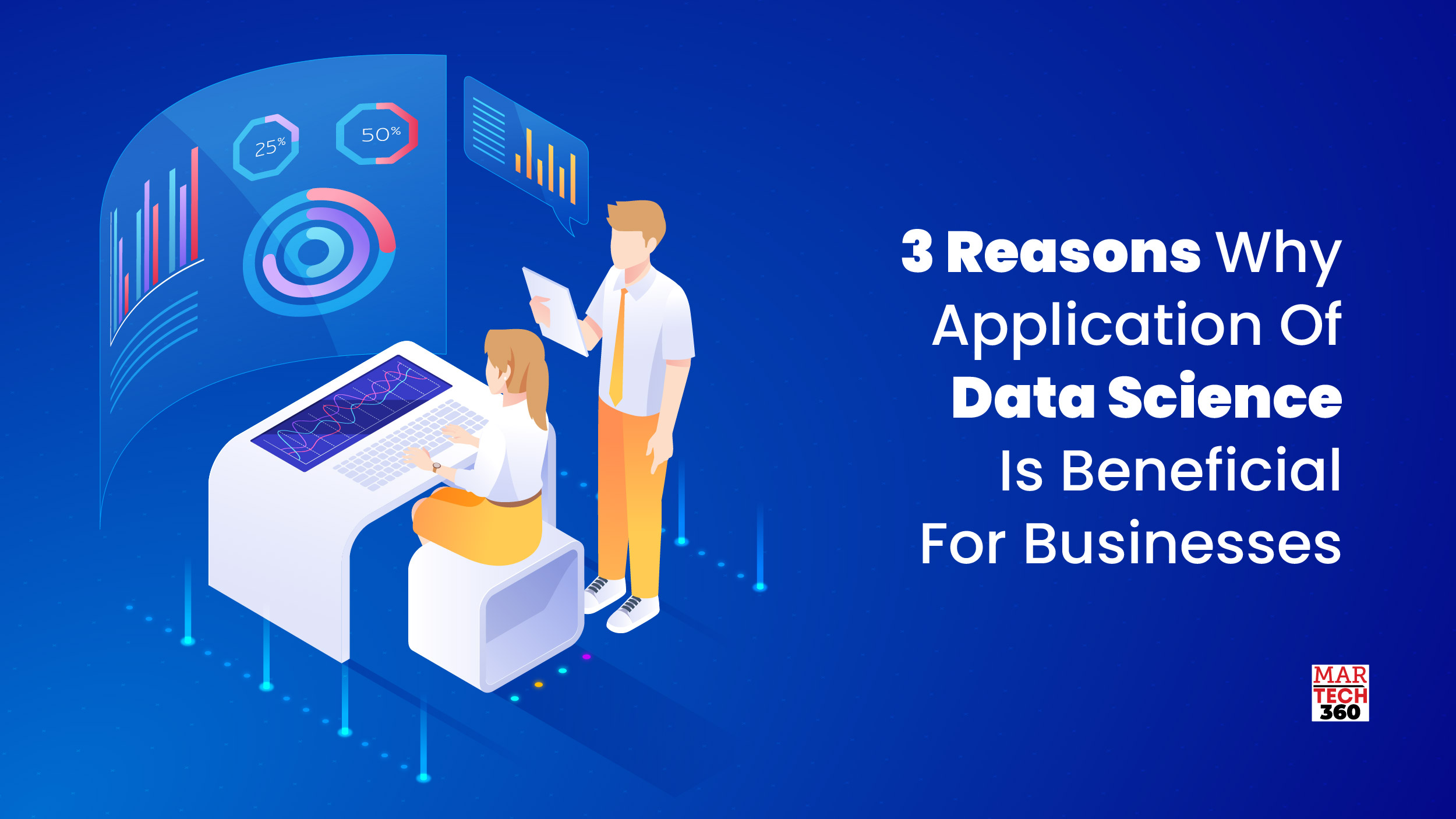Data Science has a lot of benefits for almost all businesses. The application of data science in a business has proven beneficial for making better decisions, defining goals, identifying opportunities etc. But how can data science provide industry-specific insights for a business?
The first step is to hire a data scientist who can study and structure the business data to extract accurate data insights. Data science can make a positive impact to any business only if its importance is widely known. It can also appropriately classify a target audience and choose the right talent as well.
The business world has a massive amount of data, but it is important to know how to use the data to our benefit. Many businesses have still not applied data science in their business making, which makes them unaware of the numerous ways to leverage data relevantly. Here are 3 main reasons why and how application of data science is beneficial for all businesses.
Application of Data Science to Predict Future Market Trends
The best use of data science for a business is that it can collect, analyze, and measure data on a larger scale. This enables businesses to identify newly emerging trends in the market. The future outcomes of a market can be analyzed by using Predictive analytics. Predictive analytics has multiple applications in a business. It can be applied for market analysis, risk assessment, customer segmentation, risk assessment, and sales forecasting.
Predicting future market trends helps understand what products customers are interested in. This way businesses can have an edge over their competitors as they can predict the future market trends beforehand. It can help businesses stay up-to-date on the behavior of their target audience, which results in making better business decisions.
 To have an understanding about the data science market trends of 2023 which include the rise in cloud migration, getting cloud-native solutions, augmented consumer interfaces, better data regulation and AI as a service.
To have an understanding about the data science market trends of 2023 which include the rise in cloud migration, getting cloud-native solutions, augmented consumer interfaces, better data regulation and AI as a service.
For instance, TinyML and small data in the field of data science are revolutionary as algorithms of tinyML, created to take less space possible and function on low-powered hardware. Through all these different kinds of systems that can be used, from agricultural machinery, industrial equipment, home appliances to wearables. TinyML can be mainly applied in object recognition and classification, identifying the gestures, spotting the keyword, machine monitoring and detecting the audio.
Make Better, and Data-driven Business Decisions
Now that we know how data science can help in predicting the future market trends it is time to understand how to leverage data. Knowing the future outcomes is not enough, businesses should be able to leverage data appropriately to make data-driven business decisions (DDDM). Through taking better decisions by analyzing the data, one can evaluate the course of action before even committing to it.
Poor decisions based on improper surveys and lack of skills for data handling have resulted in some disastrous business decisions. In business there might be circumstances, wherein the company can engage in collecting survey responses. Such surveys include identifying products, features, and services that their customers would like to have.
Businesses need to regularly conduct user testing to understand how their customers are interested in using the company’s products and services. They can also acknowledge the potential issues which can be resolved before getting released in the market. There is also another way to make decisions, that is to comprehend the demographic data to identify the potential business opportunities and threats.
Nowadays, there are enough tools that can help businesses in making more calculated data-driven decisions. These tools are powerful and can process data faster and come up with accurate results.
For example, the predictive analytics tool which has several important features such as data preparation (handles large volumes of data), modeling (requires to automate the tasks), being user-friendly (keeping the tools easy to comprehend), and security (securing the data).
Customer Insights To Grow Businesses To Grow
Gaining customer insights is one highly important factor to consider to implement data science into business. Data consists of customers’ details about their preferences, purchasing habits, demographic characteristics, aspirations etc.
Businesses can gather data about when a customer visits their website, adds an item to the cart, completes a purchase, engages with social media posts etc. By this data analysis businesses can identify trends in customer behavior.
The application of data science can help in understanding who the customers are and what are their motivates. This further helps a business to assess whether a product is meeting their expectations and whether the marketing and sales efforts are working.
 Having reliable customer data further helps in retargeting the existing customers and identify areas where there is scope of improvements.
Having reliable customer data further helps in retargeting the existing customers and identify areas where there is scope of improvements.
The fastest way to get the customer insights is to get the feedback from the customer and work strictly upon it. Making questionnaires can help the organizations to get essential takeaways which can be applied to future campaigns.
Another way of getting the customer insights can be by measuring customer sentiment, like Net Promoter Score (NPS) system and star ratings. Through these ways customers can rate the products or services in one click popup. This process is entirely hassle free as some customers are unwilling to share their honest opinion in person but through popups like these can measure customer satisfaction through digital experience alone.
Wrapping It Up
Data science is the one-stop solution for all businesses to become more efficient. It comes with infinite possibilities for a business which can help them grow and stay abreast of their competitors. To become data-driven and prosper in the organization, one needs to start from small, evaluate the performance, try to document every bit and synergize with the process.
There are multiple ways of data-driven decision making, from analyzing the patterns, hooking every decision back to the data, visualizing and understanding meaning behind every data, and regularly upskilling in the field of data science.
Through all these ways any organization can predict, record and further implement on the necessary data acquired to understand the things required to grow in the market.


Comments are closed.